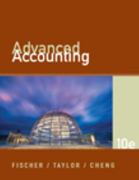Question
Smith, Brown and Easton (S, B & E) are partners with capital balances of $5 000, $4 000 and $2 000 respectively and S, B
Smith, Brown and Easton (S, B & E) are partners with capital balances of $5 000, $4 000 and $2 000 respectively and S, B &E share profits 50 per cent, 25 per cent and 25 per cent respectively.
The partners have decided to liquidate the partnership and sell the non-cash assets for a $10 000 loss. After the loss is allocated, the capital account of Easton is $500 Debit. Easton is bankrupt and has left the country and will not be making up the shortfall. Thiscapital deficiency will result the capital accounts of the partners to be (to the nearest dollar):
debit Smith $278; debit Brown $222; credit Easton $500
debit Smith $333; debit Brown $167; credit Easton $500
debit Smith $250; debit Brown $250; credit Easton $500
debit Easton $500; credit S $250; credit B $250
Step by Step Solution
There are 3 Steps involved in it
Step: 1

Get Instant Access to Expert-Tailored Solutions
See step-by-step solutions with expert insights and AI powered tools for academic success
Step: 2

Step: 3

Ace Your Homework with AI
Get the answers you need in no time with our AI-driven, step-by-step assistance
Get Started


